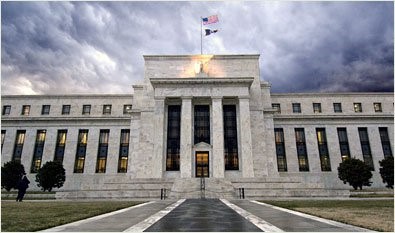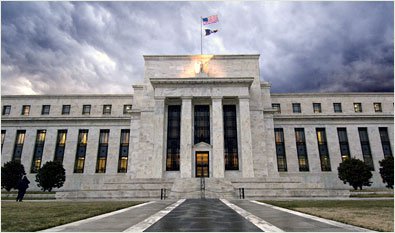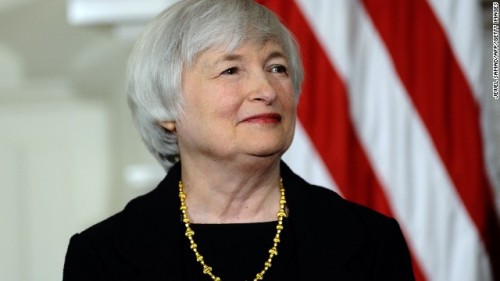
 Three years ago, former U.S. Federal Reserve Chairman Ben Bernanke opened the proverbial Pandora’s box by discussing the U.S. Federal Reserve’s intent to taper its purchases of long-term maturity bonds and mortgage-backed securities. At the time, the United States economy had rebounded to the point where additional stimulus had become a crucial talking point among partisan politicians and economists alike. In turn, Bernanke and the Federal Reserve Board believed that providing transparency would help Wall Street and Main Street prepare for the coming changes. As it turned out, the Fed got a bit more than they bargained for. In reaction to Bernanke’s May 2013 statement, fixed-income markets began a major sell-off that lasted throughout the summer, raising mortgage interest rates for Main Street and temporarily stalling the recovery of the real estate sector. As an example, the 10-year US Treasury yield increased by 140 basis points in a matter of three months, and similar securities around the world performed similarly. This occurrence is now referred to as the Taper Tantrum.
Three years ago, former U.S. Federal Reserve Chairman Ben Bernanke opened the proverbial Pandora’s box by discussing the U.S. Federal Reserve’s intent to taper its purchases of long-term maturity bonds and mortgage-backed securities. At the time, the United States economy had rebounded to the point where additional stimulus had become a crucial talking point among partisan politicians and economists alike. In turn, Bernanke and the Federal Reserve Board believed that providing transparency would help Wall Street and Main Street prepare for the coming changes. As it turned out, the Fed got a bit more than they bargained for. In reaction to Bernanke’s May 2013 statement, fixed-income markets began a major sell-off that lasted throughout the summer, raising mortgage interest rates for Main Street and temporarily stalling the recovery of the real estate sector. As an example, the 10-year US Treasury yield increased by 140 basis points in a matter of three months, and similar securities around the world performed similarly. This occurrence is now referred to as the Taper Tantrum.
Currently, U.S. Federal Reserve Chair Janet Yellen must find a way to effectively communicate with the public and private sectors about the Fed’s decisions regarding short-term interest rates. Each conversation about interest rates has signals that reverberate across the economy, affecting every sector from employment to wages to money markets and, indeed, real estate.
With the Fed and its local Districts providing key insights into the health of the economy, the decisions regarding interest rates gives the public and private sectors the context to make decisions about portfolio allocations. For example, when fixed-income markets sold off due to the discussion of tapering, it signaled to traders that their positions were too concentrated in bonds, specifically mortgage-backed securities. Traders sold off their holdings because the U.S. Federal Reserve signaled that it would no longer support their positions, the economy was in a better position than expected, and their holdings were overvalued.

If Janet Yellen continues to signal that rates will not be lifted, then the assumption can be made that the economy has not been performing up to expectations based on the U.S. Federal Reserve’s initial decision to minimally raise rates in December 2015. With this potential information and additional insights from the FOMC announcement, the private and public sectors will have major capital decisions for the 3rd and 4th quarters of 2016. After the December 2015 rise in rates, it was anticipated that there could be up to four rate rises in 2016. However, in the wake of last week’s meeting many economists have cut their estimates for the number of rate rises in 2016, with many speculating whether there will even be two rate rises.
With lower rates in place, employers will have to determine whether to continue to take advantage of low-cost debt availability to stimulate business growth, or to hunker down and prepare for a slowing economy. If the former, then they must guard against potential economic headwinds. If the latter, then future employment growth and overall labor market will be at the forefront.
After losing hundreds of thousands of jobs during the Great Recession, the U.S. labor market has regained a degree of momentum. The potential communication of interest rates remaining unchanged can signal that the labor market could be facing stronger resistance moving forward. Currently, the U.S. unemployment rate has hovered between 4.50 – 5.00%. However, with interest rates being maintained and not increased as previously communicated in December 2015, employers will have to decide whether they are better off increasing, holding level, or decreasing employment levels.
Investments in human resources can be one of the largest silos of spending for employers. Not only with regard to payroll but insurance, unemployment, and taxes. Each of these categories elevate the amount that corporations spend monthly and annually. If the FOMC statement signals that the economy is stalling, or worse moving in a negative direction, then employers will be extra cautious to invest their capital (debt or equity) in employment because it can limit them from increasing both market share and stockholder dividends.
The prospects of lower interest rates have many different implications for the current real estate cycle. For developers, lower interest rates continue to broadcast that there has not been expansion of the economy. Investment in new ground-up projects should be carefully considered, as increased disposable income remains limited.
Moreover, the potential of not raising rates or possibly lowering them indicates to the acquisition market the possible existence of a lower performing economy. The combination of reduced incomes and inflated values from the intermediate stage of the current cycle means that those looking to add assets to their portfolios will likely continue to look for value-add projects, or stay on the sidelines within non-gateway markets. However, gateway/primary markets like Manhattan and San Francisco could potentially see continued capital inflows.
Portfolio managers and individual owners of real estate assets should look to take advantage of reduced rates by refinancing current assets to lower rates, if that process has not already occurred. These owners will have the ability to reduce debt service payments, and those in superior equity positions can increase cash holdings to either pay down junior credit or to improve the quality of their assets. Assets redeveloped/renovated to higher class can possibly fetch higher sales prices if properly aligned with the needs of the local market. The determination of whether to increase interest rates announces different information to those among the interested real estate parties, ranging from continuing investment strategies to selling, depending on their current positions.
With many economists differing in opinion about the prospects for the U.S. economy, Janet Yellen and the Federal Reserve Board have a complex decision regarding their communication about interest rates. With possibility of Great Britain exiting the Eurozone next week, there is added intricacy to last week’s announcement and big implications for the next meeting and the accompanying statement afterward. Conveying the message about interest rates has global and national implications more so than in decades past. With the economy struggling to take flight, or reach “escape velocity” as Alan Greenspan put it when explaining why interest rates were held so low in 2002-04, and reduced or stalled employment levels, real estate practitioners have many decisions to make about how they handle their capital structures and spending over the next 6 to 12 months. As seen in the mid-2000s, those decisions can determine whether an organization survives or through the inevitable downturns or closes its doors.
For the full text of the June 2016 FOMC Statement, please visit:
https://www.federalreserve.gov/newsevents/press/monetary/20160615a.htm
